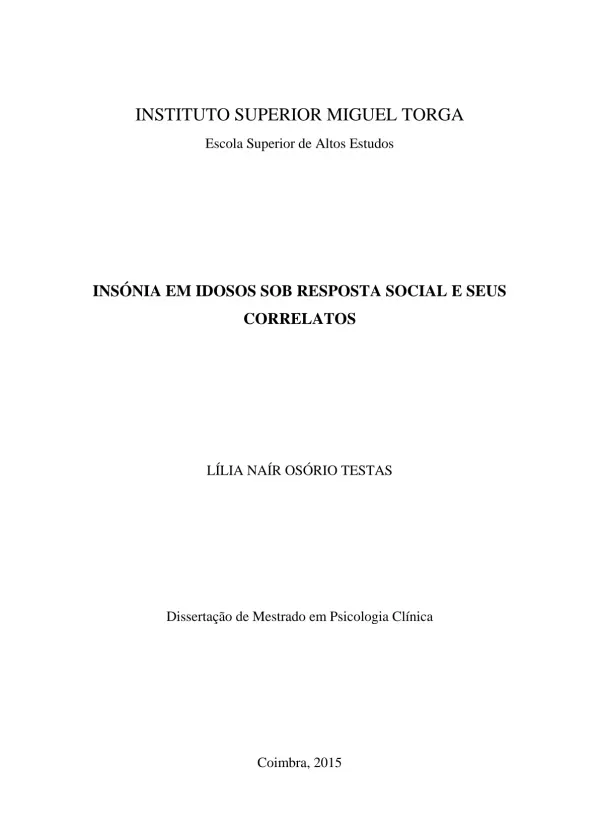
Insônia em Idosos: Prevalência, Correlatos e Impacto na Vida Diária
Informações do documento
| Autor | Lília Naír Osório Testas |
| Escola | INSTITUTO SUPERIOR MIGUEL TORGA |
| Curso | Escola Superior de Altos Estudos |
| Tipo de documento | Dissertação |
| Idioma | Portuguese |
| Número de páginas | 36 |
| Formato | |
| Tamanho | 508.34 KB |
Resumo
I.Main Content
Prevalence of Insomnia Symptoms and Insomnia among the Elderly
Introduction
Sleep is a vital physiological process with fundamental restorative functions for individuals' daily functioning. It is divided into five stages: stages I, II, III, IV (Non-REM/Rapid Eye Movement sleep), and REM (Rapid Eye Movement) sleep, and runs in cycles (starting with Non-REM sleep - from stage I to IV, until REM sleep, the stage in which people dream, at the end of a cycle). Usually, human beings experience five to six sleep cycles per night, each lasting approximately 90 minutes.
The aging process involves biological/physiological transformations (increased frequency of diseases; changes in appearance, difficulty in movement, sleep alterations), social (expressed in changes in social status - retirement), and psychological changes (alteration in cognitive functions and motivations).
Sleep, as a physiological process, undergoes significant quantitative and qualitative alterations as we age. In addition to the sleep alterations experienced by almost all seniors, longitudinal studies show that sleep disturbances increase with age and are chronic in 20% to 50% or 40% to 70% of cases.
This study aims to evaluate, in a sample of elderly people under social response: the prevalence of different insomnia symptoms and of insomnia (symptoms and daytime impairment); to analyze the association between sleep groups (Insomniacs vs. Good Sleepers + Insomnia Symptoms) and different correlates (for instance, physical exercise practice, depressive symptoms, cognitive deficit, pre-sleep arousal, naps, pain, and others).
